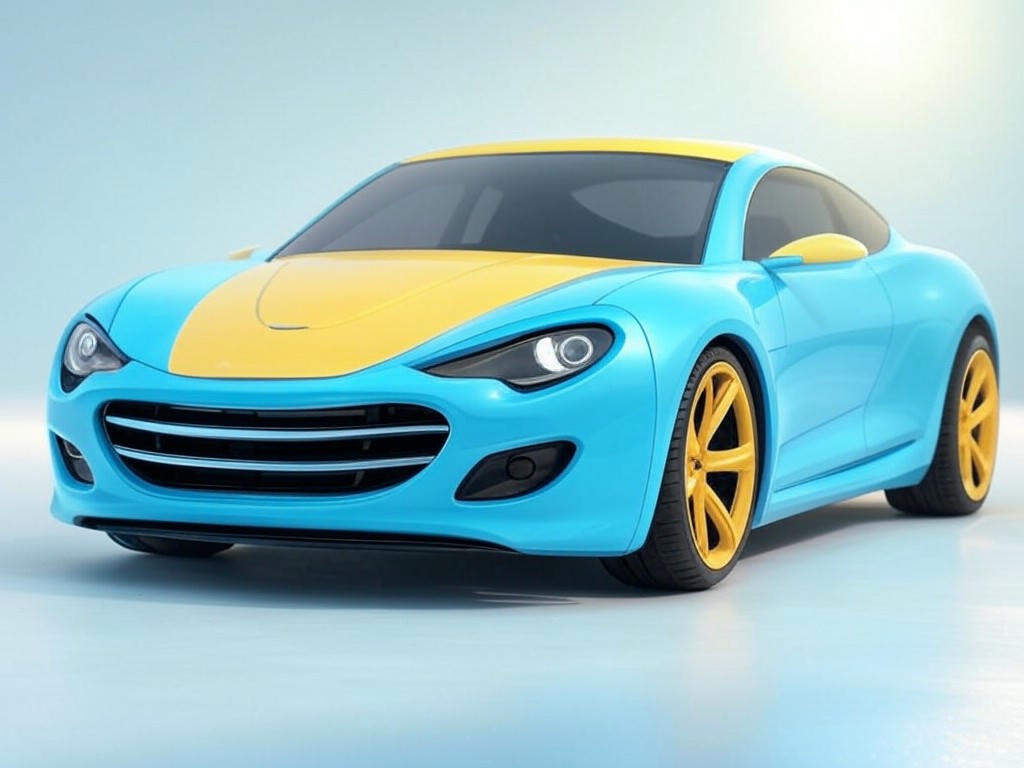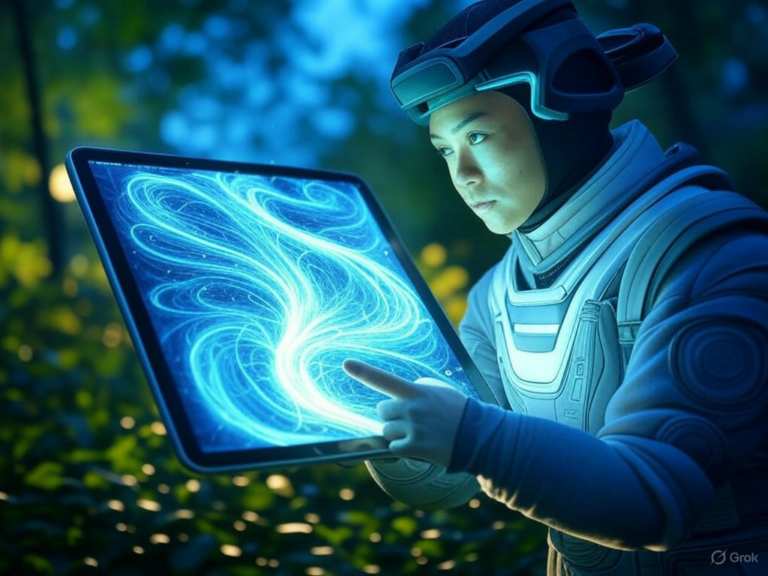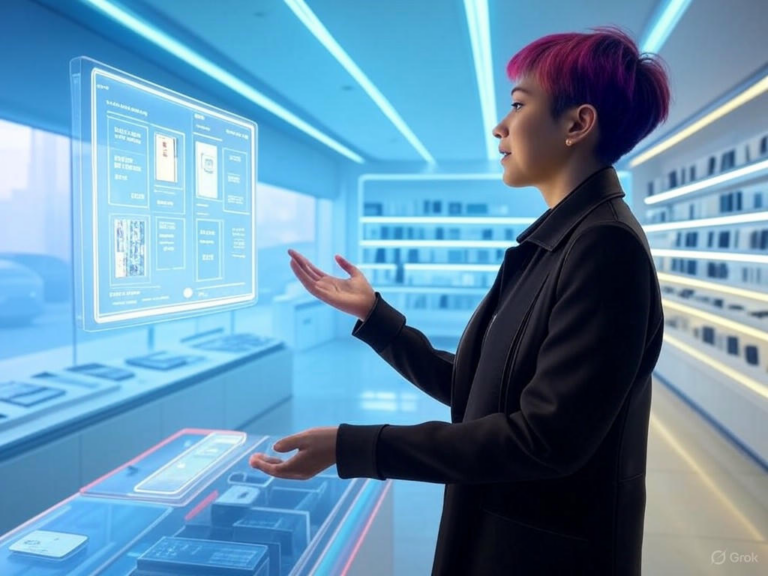
Vizcom Review: AI Rendering Tool Falls Short for Car Designers
Exploring Vizcom AI Automotive Rendering for Car Design
The automotive design industry is buzzing with AI tools that promise to streamline creativity, and Vizcom AI automotive rendering is one that’s caught many eyes. This platform lets designers turn rough car sketches into polished visuals in mere seconds, thanks to its specialized updates for automotive exteriors. But does Vizcom AI automotive rendering live up to the hype for professional car designers, or does it leave something to be desired?
From quick transformations to maintaining that essential sketchy vibe, Vizcom AI automotive rendering targets enthusiasts and pros alike. Imagine sketching a concept car on a napkin and seeing it enhanced with a digital artistic touch—it’s designed to boost ideas without overwhelming the original intent. Have you ever wondered if AI could speed up your design process while keeping things feeling human?
Recent enhancements focus on automotive needs, blending speed with style to create visuals that aren’t overly photorealistic. This approach suits early-stage brainstorming, where preserving a designer’s vision matters most.
How Vizcom AI Automotive Rendering Works
Vizcom AI automotive rendering simplifies the journey from sketch to stunning visual, making it accessible for anyone in car design. Start by uploading your car sketch, and the AI kicks in to analyze and refine it based on your inputs.
Step-by-Step Workflow for Car Designers
The process is straightforward and user-friendly, perfect for busy designers. First, upload or draw your car sketch directly in the tool, then pick a rendering style like the automotive exterior option.
- Upload your sketch and choose from styles such as Vizcom General for photorealism or the automotive-specific one for that artistic edge.
- Add prompts like “sleek concept sports car from the front” to guide the AI.
- Tweak settings, such as drawing inflow at 90-95%, for the best results without losing your original idea.
- Generate the render, review it, and refine as needed for more iterations.
Styles like Volume Render add a 3D feel, while Technicolor 6 brings vivid colors to life. You can even upload reference images to customize outputs, helping tailor Vizcom AI automotive rendering to your exact vision.
Latest Updates and Features
Vizcom has rolled out updates that cater directly to car designers, enhancing its automotive rendering capabilities. Now, you can modify backgrounds easily using tools like in-painting, letting you place your design in various settings.
For instance, select your car, invert the selection with Ctrl+I, and swap out the background while keeping the vehicle intact. This feature adds versatility, allowing gradual increases in realism—say, to 80%—for a balance of detail and artistry. It’s a game-changer for quick tweaks in your workflow.
Strengths and Drawbacks of Vizcom AI Automotive Rendering
Vizcom AI automotive rendering has clear wins, but it’s not without flaws that could trip up car designers. Let’s break it down to see if it fits your toolkit.
Top Strengths for Everyday Use
Speed is a standout—imagine turning a basic sketch into a shareable render in seconds, saving hours of manual work. This efficiency lets you explore multiple car designs rapidly, ideal for fast-paced projects.
Another plus is how Vizcom AI automotive rendering keeps that sketchy, artistic feel intact, avoiding the pitfalls of ultra-realistic outputs. It’s perfect for concept phases where creativity flows freely.
Plus, the interface is intuitive, making it easy for beginners or pros to jump in without a steep learning curve. What if you could focus more on innovating car designs and less on technical hurdles?
Key Limitations to Watch Out For
On the flip side, unpredictable results can frustrate professionals who need precision. Vizcom AI automotive rendering might twist design elements in unexpected ways, leading to “funky” outcomes that require fixes.
Limited fine-tuning means it’s not great for final presentations, as you’ll often need to edit in tools like Photoshop. And preparing sketches just right adds extra steps, which can eat into the time savings.
Have you tried relying on AI only to find it misinterprets your vision? That’s a common challenge with Vizcom AI automotive rendering, especially for intricate car details.
Practical Uses in Automotive Design
Despite its shortcomings, Vizcom AI automotive rendering shines in real-world scenarios, from brainstorming to client pitches. Here’s how it fits into the design process.
Idea Generation and Early Exploration
For kicking off projects, Vizcom AI automotive rendering is a go-to for turning rough ideas into visuals fast. Think about sketching a muscle car concept and instantly seeing enhanced versions to test proportions.
This tool helps you iterate quickly, making it easier to spot what works and what doesn’t. It’s especially useful in team sessions, where rapid feedback can spark better designs.
Pitching Ideas to Clients
When presenting to stakeholders, Vizcom bridges the gap between simple sketches and full renders. It creates appealing visuals that help non-designers grasp your car concepts without confusion.
Many designers refine these outputs further in other software for polish. Tip: Start with Vizcom AI automotive rendering for speed, then layer in details for a professional finish.
Learning and Education
Students and hobbyists love Vizcom AI automotive rendering for its accessibility, letting them visualize ideas without mastering complex programs first. It’s a great way to learn how 2D sketches translate to 3D forms.
For example, experimenting with a car sketch can teach you about aerodynamics and styling in a hands-on way. What better way to build skills than seeing your creations come to life quickly?
Comparing Vizcom with Other AI Tools
In the crowded world of AI rendering, Vizcom AI automotive rendering holds its own, but how does it stack up against competitors? Let’s compare to help you decide.
| Feature | Vizcom AI Automotive Rendering | NVIDIA Omniverse | Other Tools |
|---|---|---|---|
| Rendering Speed | Seconds | Minutes to hours | Typically minutes |
| Photorealism Level | Medium (artistic) | Very high | Medium to high |
| Detail Control | Limited | Extensive | Varies |
| Learning Curve | Low | High | Medium |
| Workflow Integration | Moderate | Extensive | Varies |
NVIDIA’s offerings, for instance, deliver top-tier photorealism and deep integration, though they demand more time and expertise. A study from NVIDIA’s automotive resources highlights their strength in complex simulations, making them better for advanced stages.
Vizcom AI automotive rendering excels in quick, creative tasks rather than high-stakes production. Which tool would you choose based on your project’s needs?
Tips for Mastering Vizcom AI Automotive Rendering
To get the most out of Vizcom, follow these best practices tailored for car designers. It’s all about smart preparation and workflow tweaks.
Optimizing Your Sketches
Prepare sketches with clean lines and clear shapes to maximize Vizcom AI automotive rendering results. Focus on key elements like proportions rather than tiny details for the AI to handle effectively.
Keep drawing inflow settings around 90-95% to strike the right balance. This way, you maintain control while letting the tool enhance your work.
Crafting Effective Prompts
Use specific prompts to guide the AI, such as “modern electric car in profile view,” to get closer to your intended design. Experimenting with styles like Technicolor 6 can bring out the best in futuristic concepts.
Don’t be afraid to test variations—it’s a simple way to refine outputs without starting from scratch.
Refining and Polishing Outputs
Treat Vizcom as a starting point: Export renders to Photoshop for precise adjustments. Gradually boost realism through the tool’s features for better control.
This hybrid approach ensures your final pieces are professional-grade. How might these tips transform your next car design project?
What’s Next for AI in Car Design?
Vizcom AI automotive rendering is just the beginning of AI’s role in automotive innovation. As technology evolves, we’re seeing more tools that blend creativity with efficiency.
Upcoming Trends
Future AI systems could incorporate factors like aerodynamics and manufacturing constraints, making them even more relevant for car designers. This evolution promises faster, more accurate visualizations without sacrificing intent.
Imagine AI that not only renders but also suggests improvements based on real-world data—what could that mean for your designs?
Your Role in This AI Era
AI tools like Vizcom are enhancing, not replacing, designers by handling the routine tasks. The key is learning to collaborate with them to amplify your ideas.
Education will play a big role, teaching future designers how to leverage these tools effectively. Are you ready to adapt and thrive in this changing landscape?
Wrapping Up: Should You Use Vizcom?
Vizcom AI automotive rendering is a solid choice for quick concept work and early visualizations in car design, offering speed and ease that can spark creativity. Yet, its limitations in detail and accuracy mean it’s not a one-stop solution for pros.
Consider it a helpful companion in your toolkit, especially if you’re a student or enthusiast. For high-precision needs, pair it with other software to fill the gaps.
As AI advances, tools like this will only get better—why not give it a try and see how it fits your style? We’d love to hear your experiences in the comments below, or check out our other posts on AI in design for more insights.
References
Our insights draw from various sources to ensure accuracy and depth:
- “Vizcom Rendering Tutorial” from YouTube, https://www.youtube.com/watch?v=NXtndFlKoAE
- “AI in Design Overview” from YouTube, https://www.youtube.com/watch?v=F2vnJ6CQY68
- “What I Learned When I Let AI Render My Hand Sketches” from BYU Design Review, https://www.designreview.byu.edu/collections/what-i-learned-when-i-let-ai-render-my-hand-sketches-2024
- Additional YouTube tutorial, https://www.youtube.com/watch?v=WeKklAK3bJM
- “Vizcom Rendering” from Dean’s Garage, https://www.deansgarage.com/vizcom-rendering/
- NVIDIA Automotive Resources, https://www.nvidia.com/en-us/industries/automotive/
- Further YouTube content, https://www.youtube.com/watch?v=znd6WeoymPc
- Another YouTube video, https://www.youtube.com/watch?v=V0Mjf0spiwE
Vizcom AI automotive rendering, Vizcom AI, car design rendering, automotive sketches, AI rendering tools, concept car visualization, AI for car design, Vizcom review, automotive AI tools, car designers AI







